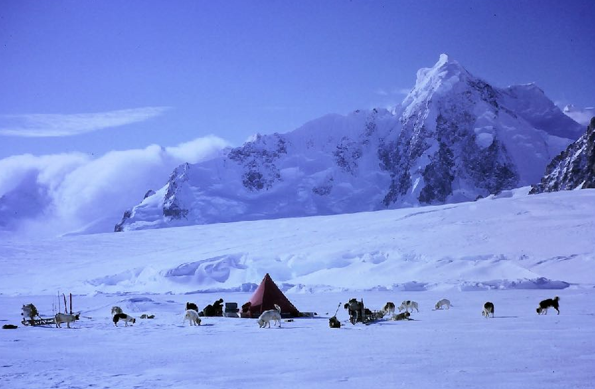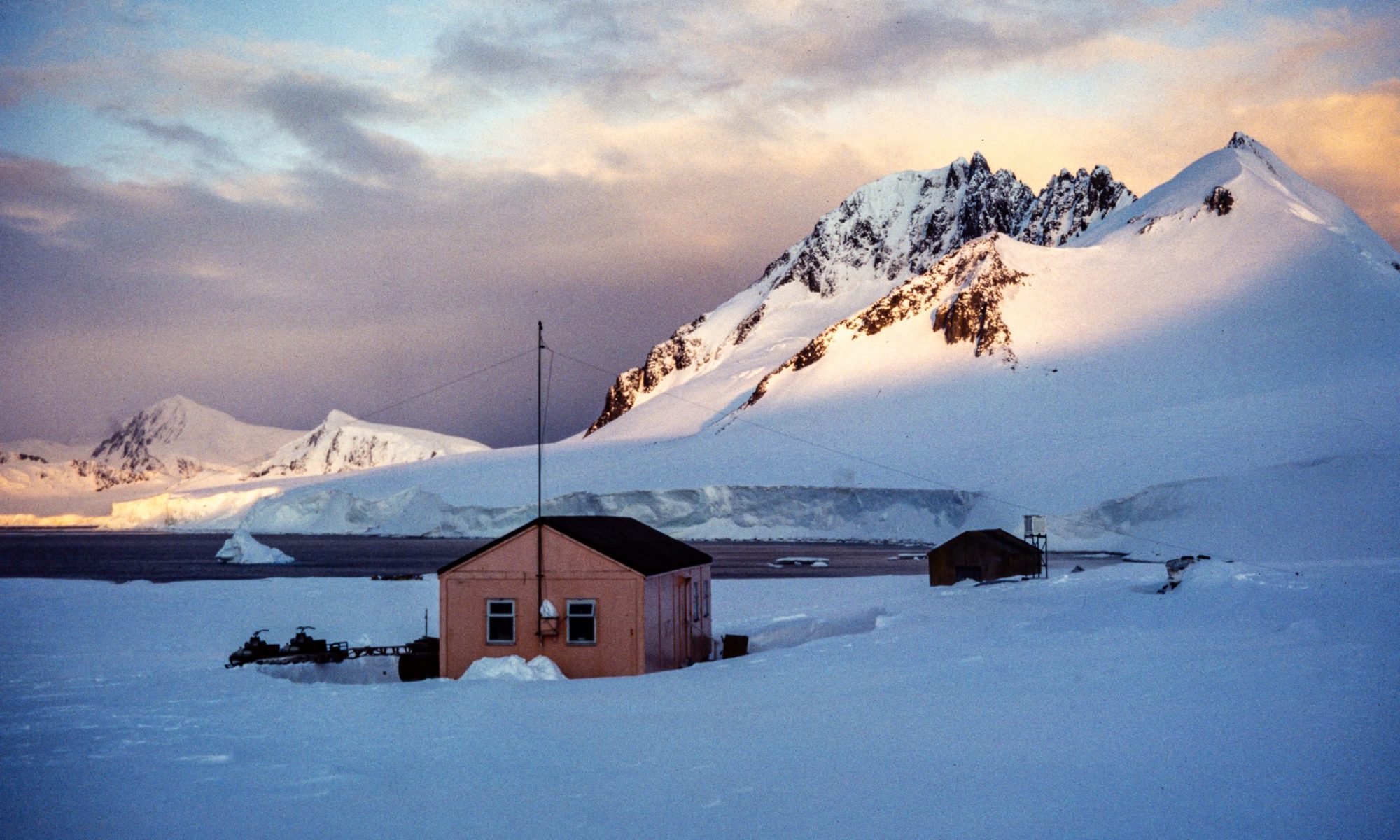In Praise of Damoy (continued)
If translation is needed, please consult “Cool” for a glossary of Antarctic slang. Digital image processing by Chris Bell.
Bruce Herrod wrote:

(Photo: Steve Garrett)
“The Biscoe anchored not so far off Port Lockroy, just round the point from Damoy. Good news filtered through the usual rumour-rife channels that the two BAS aircraft VP-FAW and VP-FAZ had departed and – elements willing – should land at Rothera early evening. A flurry of expectant activity followed: FIDs in bulging life jackets, cameras clutched in mittened paws clustered on the well deck, clad against the biting breeze. The Biscoe, having moved round the point and nosed her way into Dorian Cove below Damoy, anchored and disgorged launch, Gemini and scow laden with clatch, personal and scientific gear galore: gravimeter, explosives and detonators. Apart from running the launch and scow aground and landing on sea-ice – to the attention of a few baffled Weddell seals and some comic Gentoo penguins standing forlorn in their rookery – the unloading was rapidly completed.
The scow returned for a second and final load while McManus, Fletch and the ‘doo kings rent the air with new, whining skidoo engines, whizzing gear the few hundred yards up to the Damoy Hut, an elegant refuge, commanding what is a truly stupendous view across Neumayer Channel to Anvers Island. The weather was steadily improving all the time. Ian Barker, Rudi Bramwell, Alan Meneilly and I got on with clearing the hut, breaking out personal sleeping bags and cooking for 14. The others of the shore party steadily shifted three aircraft-loads worth of gear and six drum landing strip markers up to the slender ridge behind the hut, which serves as a small landing strip for the ferry flight to Rothera”.
As a first landfall in Antarctica it was hard to beat. The sense of wonder at the landscape only exceeded by the impressiveness of the new photographic technical armoury on display – if it moves, grip it, and if doesn’t move, grip it. In late 1982 I noted less sea ice due to the warmer winter, the glorious blue light and shadows of Mount Vincent over the water, the fishy smell of the penguin colony, their cries the only thing to break the silence of the wind apart from cries from the hut of ‘Scradge’, ‘Smoko’ or ‘Help’. The sky one night was an incredible panorama from orange sun, deep Prussian blue sky over Anvers Island and pink over the ‘wall’ behind Port Lockroy. Surely a candidate for the most beautiful place on earth. It inspired some of my landscape watercolour paintings, one of which I left framed in the hut – I wonder if it is still there?


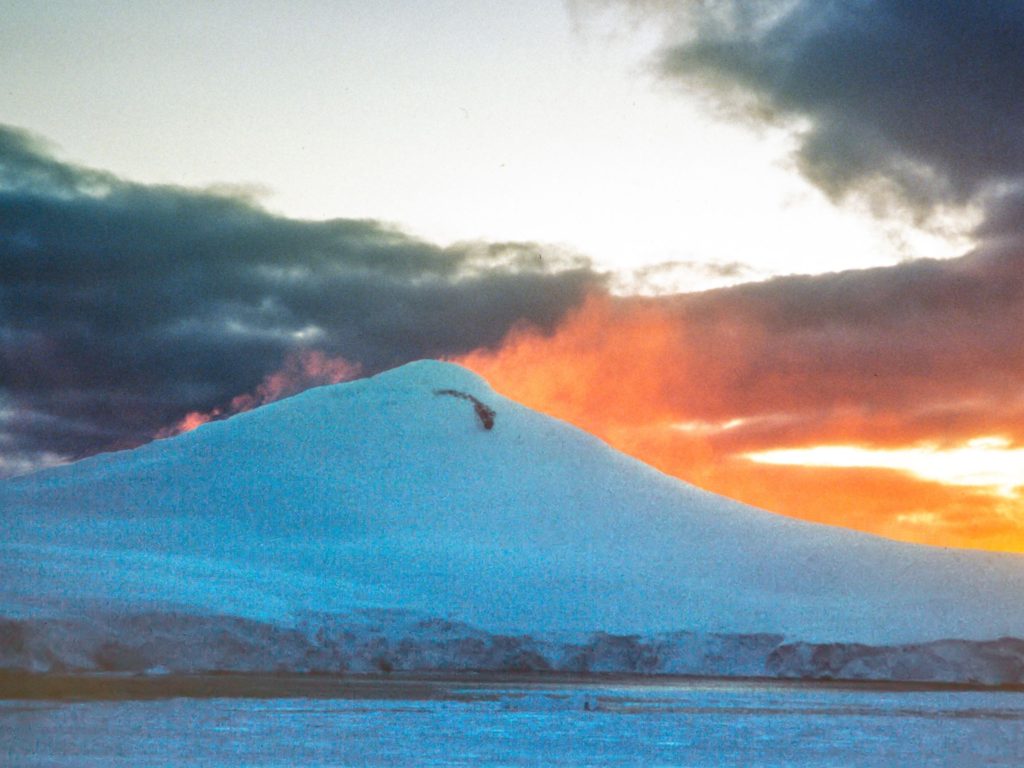
This introduction gave the new FIDs a chance to acclimatise to the Antarctic, helping out, painting the hut, learning to drive a skidoo, getting used to living at close quarters, getting used to waiting on weather, and meeting the penguins and seals. But if flying was delayed due to weather it could feel crowded in the hut with fifteen people in two rooms. The behaviour of the occupants would deteriorate a little with long days spent in inactivity inside, but outside the hut, what a wonderful contrast: perfect peace outside the hut and perfect lunacy within.


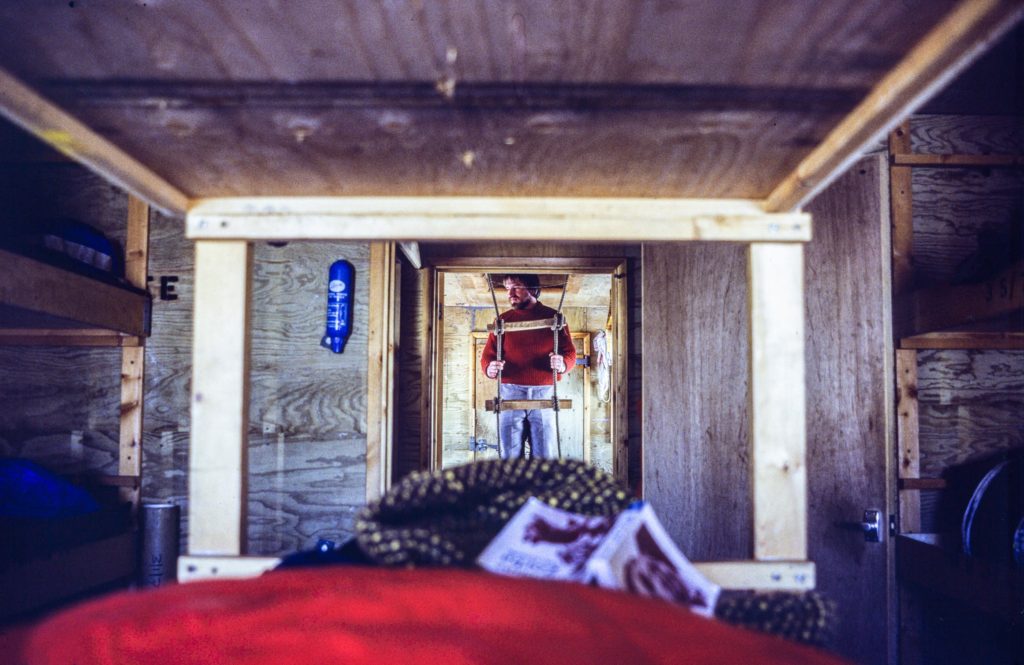
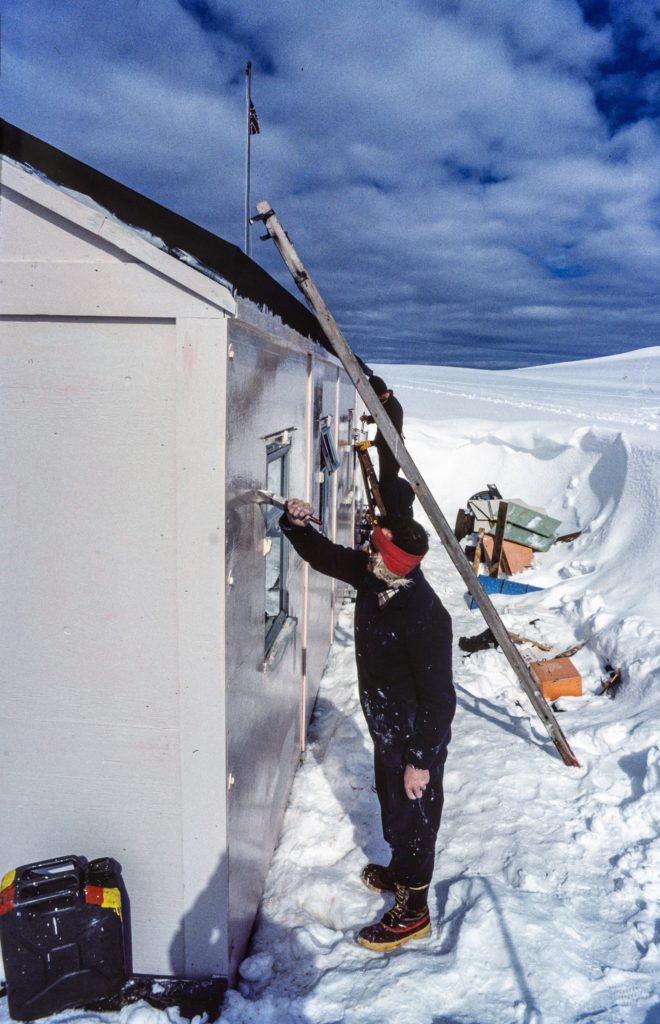
So it was with a feeling of relief that the cloud lifted, flying resumed and more space was left in the hut. The spring warmth could make the snow very soft during the day so flights could be delayed until ‘night’ with a clear sky and cold crisp surfaces for take-off and landing. The flight down the west coast of Graham Land to Marguerite Bay was superb.
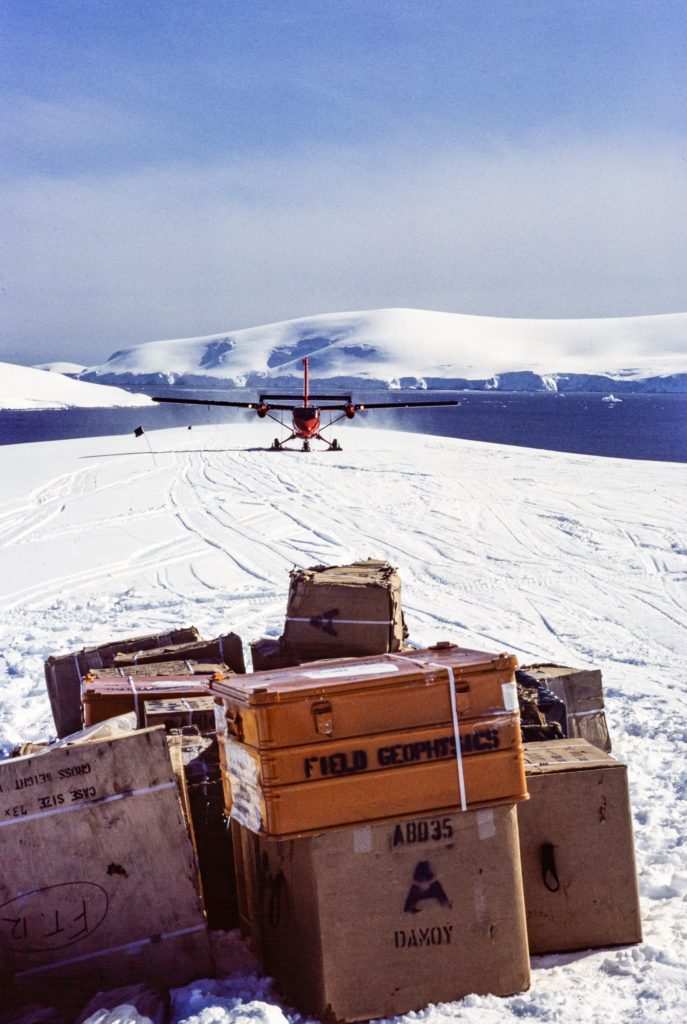
Bruce wrote:
“From the cockpit – my first time ever in a light plane – I was almost speechless at such beauty as we penetrated further and further south amid myriads of snow-capped jagged peaks, endlessly carved by great cascading rivers of ice. How on earth does one go home at the end of one’s time here and explain to people at home what Antarctica is like? The task is hopeless, pictures but little compensation. All I will be able to say is mine and mine alone and few, if any, of those who have not visited such places will be able to appreciate what I tell. I will only be able to suggest that they see for themselves.”
Many tourists indeed may now be able to see for themselves, but visits on ships with hundreds of passengers cannot replicate the experience of first landfall at Damoy with a handful of colleagues. I recently was discussing this with a friend who drew a striking analogy with the progressive physical acclimatisation needed to altitude or extreme environments. BAS staff and visiting scientists now have a direct route from Stanley to Rothera, which may be a more efficient use of time and resources, but perhaps is a less effective an acclimatisation to the social and physical constraints of working in Antarctica.


Steve Garrett, Airborne Geophysics Program, Rothera – 1981, 1982, 1983
